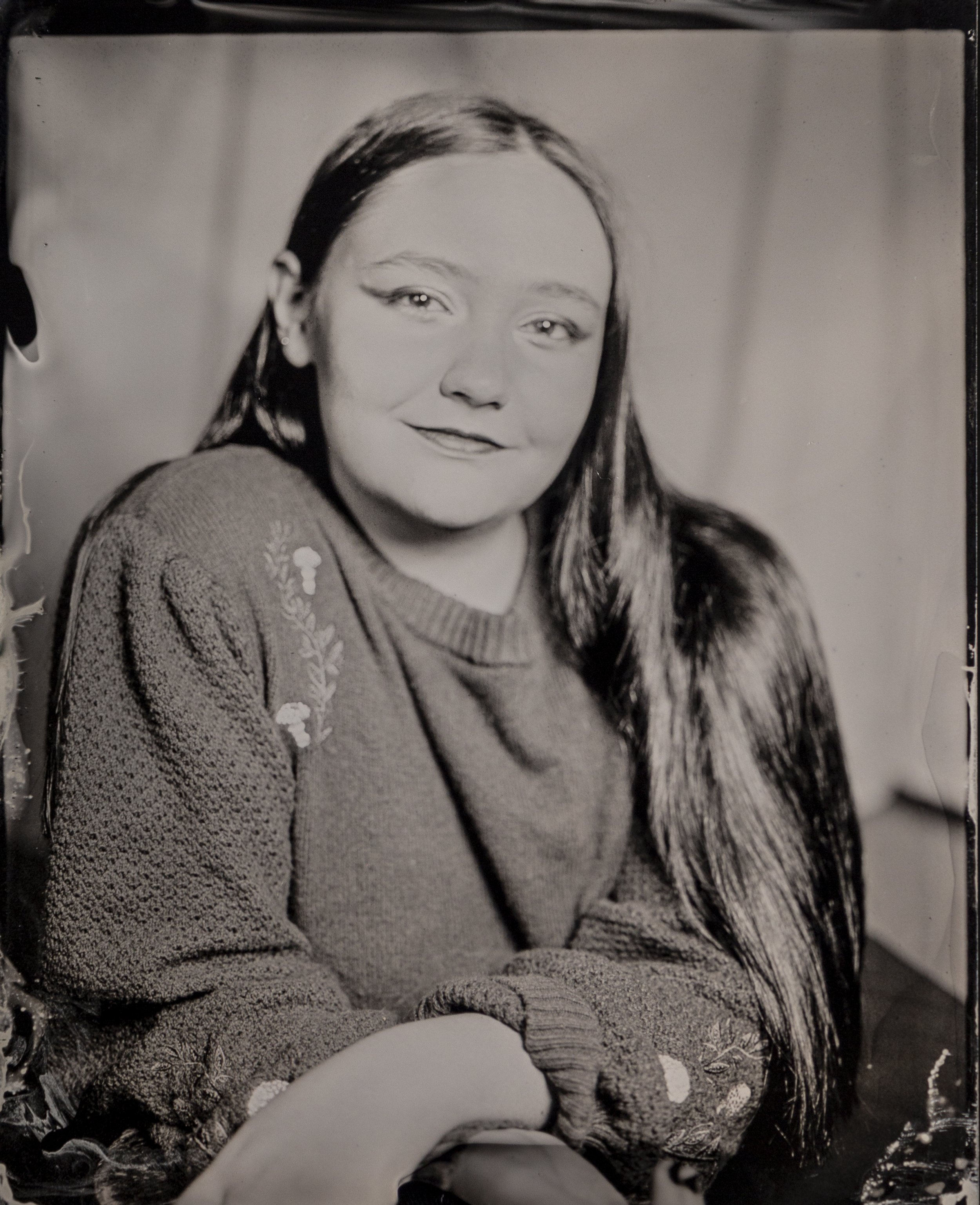
Wet plate collodion tintypes
What are Wet Plate Collodion Tintypes
This is a method of making tintypes that originated in the 1850’s. It involves taking an aluminium/tin sheet and painting it black, then using a short chemical process to etch silver onto the surface creating the image.
The Project
I was lucky enough to learn from Emma Brown, a professional tintype photographer, for a day about the process of creating the tintypes, and made some of myself and her.
My Approach
The process starts by taking an aluminium sheet(originally tin was used) coated in black paint and coating it in a collodion emulsion. You must then ensure that the collodion has solidified onto the plate, forming a gel-like film, this is often confirmed with touching the corner with your thumb, leaving a vague fingerprint. Most tintypes have the maker’s fingerprint in the corner because of this.
Bumps in the road
Once the gel has solidified the plate is then dipped into a silver nitrate solution which sensitizes it to light. Because of this, this part is done in the dark with only a red light on to see by. It sits in this solution for 3 minutes and when removed is immediately put into the holder, and then slid into the camera. The photo must be done quickly as it needs to be taken before the silver solution dries. When the photo is taken there must be a large flash as that will react with the silver and cause it to stick to the collodion.
Final Product
Once the Photo is taken it is coated with a ferrous sulfate developer that runs over it for 10-15 seconds depending on the intensity of the light, strength of the developer, and photo wanted. The development is ended by water being poured over the plate. These steps are done in red light to ensure the photo develops. After this the regular lights are switched on and the negative image appears. A fix made of ammonium is then poured over the plate revealing the final image.


